Hiroshima Prefecture is home to many great things to do and see and is a popular destination for both domestic and international visitors. In addition to major sightseeing spots such as the Atomic Bomb Dome and Peace Memorial Park, Onomichi and Kure offer hidden gems and gourmet specialties!
Next, we will introduce a wide range of world-class sightseeing spots in Hiroshima Prefecture, from the world heritage-listed classics to hidden gems of the beaten path.
Hiroshima Peace Memorial Park

Hiroshima Peace Memorial Park, located in the center of Hiroshima City, was built in this location near the hypocenter to pray for lasting world peace.
The park includes Hiroshima Peace Memorial Museum, the Atomic Bomb Dome, the Cenotaph for the Atomic Bomb Victims, the National Peace Memorial Hall for the Atomic Bomb Victims, and the Hiroshima International Conference Center.

In addition, a memorial service for the victims of the 1945 atomic bombing is held every year on August 6. At sunset, lanterns with messages of peace written on them are floated on the river that flows next to the symbolic “Atomic Bomb Dome.
The sight of thousands of lanterns floating down the river is definitely a sight to behold. Hiroshima Peace Memorial Park introduces the “spirit of Hiroshima,” which prays for world peace by “protecting, spreading, and conveying” the devastation of that time.
The City of Hiroshima has established “Hiroshima Peace Tourism,” which can be used as a reference when visiting peace-related facilities.
Address: 1 Nakajima-cho, Naka-ku, Hiroshima City, Hiroshima Prefecture, 730-0811
Access: From Hiroshima Station, take the Hiroshima Electric Railway train bound for Miyajima-guchi or Eba, and get off at “Genbaku Dome-mae” stop.
Atomic Bomb Dome

The Atomic Bomb Dome is an important structure that is indispensable to passing on the tragedy of war to future generations for generations to come.
It plays an important role as a symbol of hope for the abolition of nuclear weapons and lasting peace in Hiroshima, where the first atomic bomb in human history was dropped on August 6, 1945.
The atomic bomb was dropped about 160 meters away from the Atomic Bomb Dome (formerly the Hiroshima Prefectural Industrial Promotion Hall), and the dome can be seen peeling from the ceiling due to the blast and hot air.

It is said that the blast had a wind speed of 440 meters and a pressure of 35 tons.
Miraculously, the A-bomb Dome escaped collapse, but about 30 people inside the building were killed instantly.
The dome has been called the Atomic Bomb Dome for some time because of the circular canopy at the top, which was carved into relief after the ceiling of the Hiroshima Prefectural Industrial Promotion Hall was peeled off.
To continue to convey the tragedy of the war, it was registered as a UNESCO World Cultural Heritage site in 1996.
Please note that you are not allowed to enter the Atomic Bomb Dome, but can only sightsee from the outside.
Address: 1-10 Otemachi, Naka-ku, Hiroshima City, Hiroshima Prefecture
Hiroshima Peace Memorial Museum
Tracing history and remembering the peace

Located in Hiroshima Peace Memorial Park in Naka Ward, Hiroshima City, Hiroshima Peace Memorial Museum was established to convey to future generations the reality of the damage caused by the atomic bomb dropped on August 6, 1945, and to realize the abolition of nuclear weapons and world peace.
The museum is divided into the East Wing and the Main Wing and exhibits items left behind by A-bomb survivors and documents showing the devastation of the atomic bombing, as well as introducing the history of Hiroshima before and after the bombing and the state of the nuclear age.
2016 saw the first visit by a sitting head of state from a nuclear weapon state, former US President Barack Obama, which drew much attention.
Address: 1-2 Nakajimacho, Naka-ku, Hiroshima City, Hiroshima Prefecture
Hours: 8:30-18:00
Admission: 200 yen for adults, 100 yen for high school students, free for junior high school students and younger
children’s peace monument

The statue of the A-bombed child is the most striking feature of the park. She was exposed to the atomic bomb when she was 2 years old and developed leukemia at the age of 12.
The statue was erected at the suggestion of her classmates, who mourned the death of Sadako Sasaki, a young Hiroshima girl who was exposed to the atomic bomb at the age of two and died of leukemia at the age of 12.
The children’s peace monument, which makes us think again about the war that robbed young children of their future, continues to send out wishes for peace along with origami cranes donated by people from all over the world.
Hiroshima River Cruise and Hiroshima World Heritage Route

The “Hiroshima River Cruise” and the “Hiroshima World Heritage Route” run on different rivers in Hiroshima, known as the “City of Water. In particular, the Hiroshima World Heritage Route connects the Atomic Bomb Dome and Itsukushima Shrine, which are very popular sightseeing spots, and is one of the most recommended means of transportation for visitors.
Surprisingly, it is not easy to get to Itsukushima Shrine, but this is a convenient way to go directly to the shrine without changing trains. It takes about an hour by train, but by taking a cruise, you can be there in only 30 minutes.
The view of Hiroshima from the river is different and more interesting than when you walk. You will be able to feel Hiroshima’s unique atmosphere, as if to say, “This is indeed called the Island of Water. ……
The Hiroshima River Cruise runs from the Motoyasu River, which flows through Peace Memorial Park, to the upper reaches of the Ota River, so it may be enough for a short trip. In spring, cherry blossoms can be seen from the cruise, making it a great way to enjoy each season.
Also, you can see various islands in the Seto Inland Sea on the route to Miyajima. For families traveling with children, a cruise is highly recommended as it provides a short break.
Address: 1-9 Otemachi, Naka-ku, Hiroshima City, Hiroshima Prefecture
Website: http://www.aqua-net-h.co.jp/en/heritage/
Orizuru Tower

Orizuru Tower is a building located near the Atomic Bomb Dome, which is designated as a World Heritage Site. Visitors can enjoy a panoramic view of Hiroshima City from the observation deck, drop origami cranes folded by themselves on the wall, and enjoy unique …
Located next to the Atomic Bomb Dome, Orizuru Tower is an office and tourist building with 13 floors of offices and rental meeting rooms, as well as commercial facilities for the general public, including specialty stores and cafes.
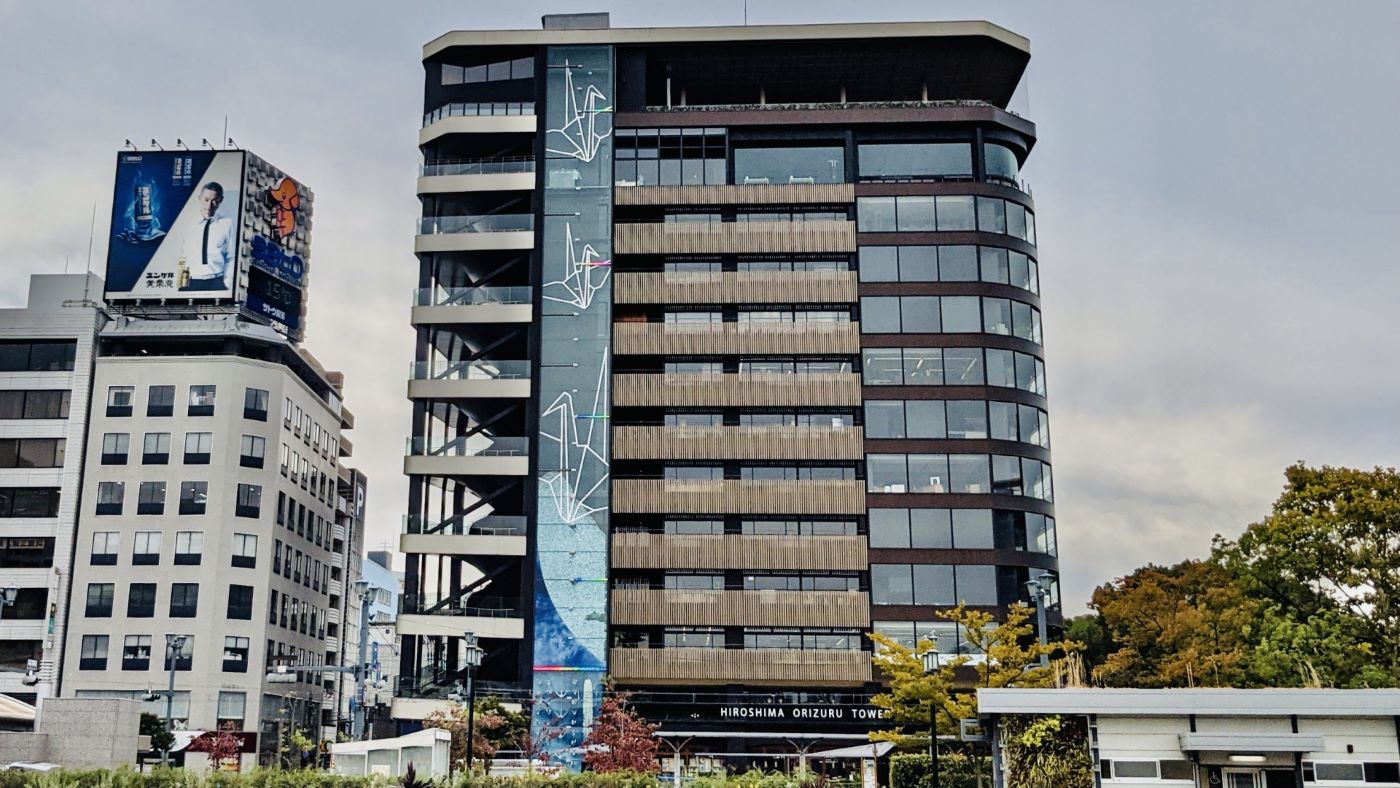
Recommended for visitors is the Hiroshima-no-Oka Observation Floor on the 13th floor and the Orizuru Plaza on the 12th floor. You can see the Peace Memorial Park in front of you and the entire city from above, and on a clear day, you can even see as far as Miyajima.
Sometimes special exhibitions are held here, so check it out when you are sightseeing in Hiroshima. When you are done sightseeing, enjoy shopping at the product shop on the first floor.
Address: 1-2-1 Otemachi, Naka-ku, Hiroshima City, Hiroshima Prefecture, 730-0051
Website: https://www.orizurutower.jp/
Shukkeien Garden

Shukkei-en Garden is a more than 400-year-old daimyo’s garden built as a villa garden of Nagasheng Asano. The garden, which is said to have been reduced in scale after the world-famous “West Lake” in China, is a pond garden with mountains, ravines, and a tea house arranged around a pond, and is registered as a national place of scenic beauty.
The garden was completely destroyed by the atomic bomb, but has since been restored and is now a major tourist attraction in Hiroshima, attracting 300,000 visitors a year alone. The park offers a beautiful view of cherry blossoms, irises, and other flowers in full bloom each season.
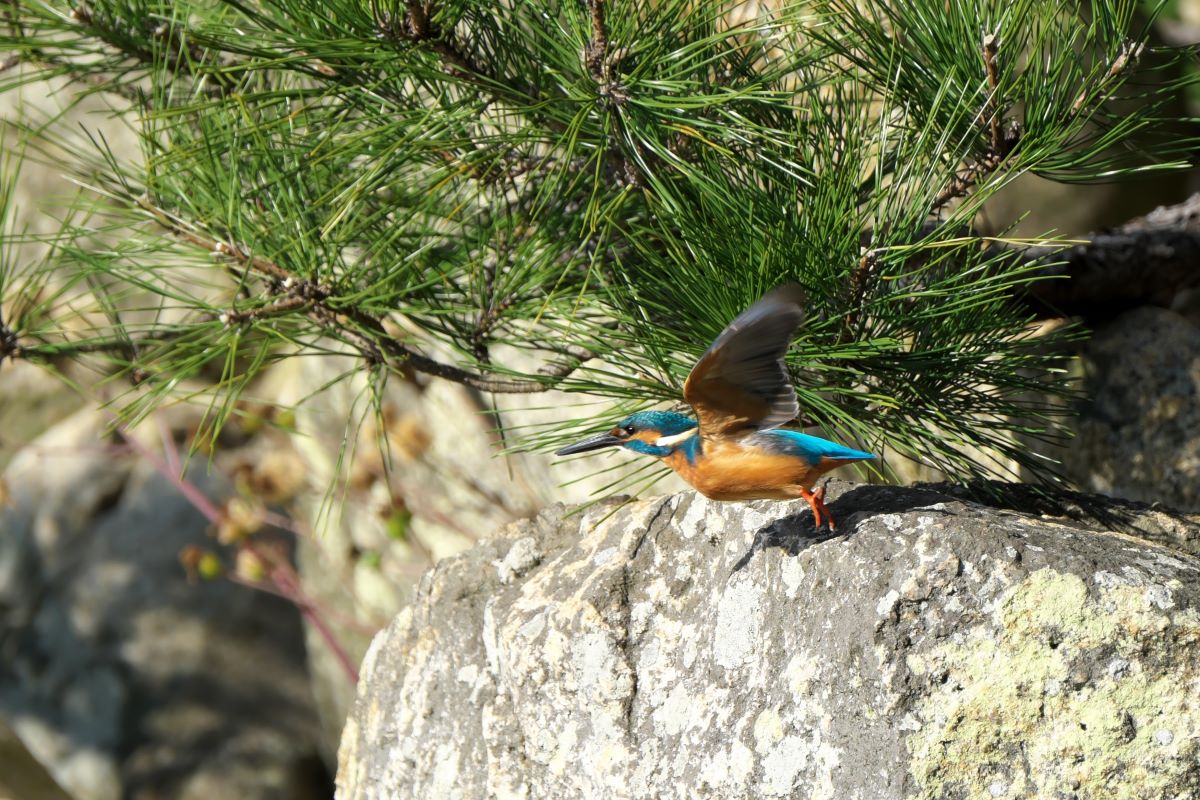
In addition, various events are held throughout the year, such as tea ceremonies, flower festivals, and straw-rolling, making the park a popular place for relaxation for many people both inside and outside of Hiroshima Prefecture.
Enjoy the charming atmosphere of this lush garden, which is located in the center of Hiroshima City, but makes you forget the hustle and bustle of the city.

Address: 2-11 Kaminobori-machi, Naka-ku, Hiroshima City, Hiroshima Prefecture, 730-0014
Access: From Hiroshima Station, take the streetcar to “Hatchobori” stop, transfer to Hakushima Line and get off at “Shukkeien-mae” stop.
Hiroshima Castle

Hiroshima Castle was built by Terumoto Mori, one of the Five Grand Elders of Hideyoshi Toyotomi. The design of the castle is said to have been inspired by Toyotomi Hideyoshi’s Juraku-dai.
In 1931, the castle was recognized as a national treasure but was destroyed by the atomic bomb in 1945. After that, the exterior was renovated in 1958 and the interior in 1989, and today the castle is a historical museum with the theme of samurai culture.
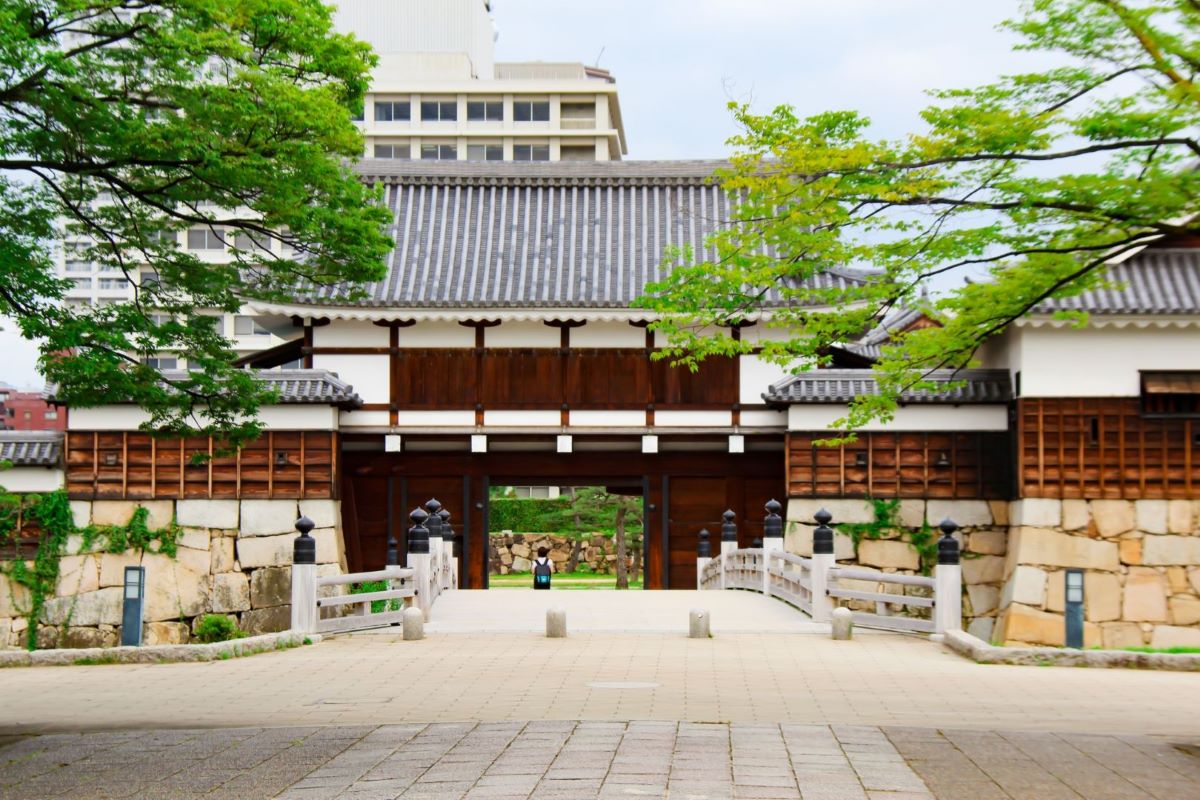
Inside the castle, visitors can enjoy a variety of hands-on activities and take commemorative photos wearing samurai costumes such as armor and uchikake (a type of cloth worn by samurai).
Address: 21-1 Motomachi, Naka-ku, Hiroshima City
Hours: 9:00-18:00
Admission: Adults 370 yen, seniors (65 and over) 180 yen, high school students 180 yen, junior high school students and under free
Official URL: Hiroshima Castle
Mazda Zoom-Zoom Stadium Hiroshima
A mecca for the Carp baseball fans and filled with a sense of unity among fans

Hiroshima Mazda Zoom-Zoom Stadium is a baseball stadium in Hiroshima City, known as the home of the Hiroshima Toyo Carp.
The asymmetrical design of the stadium is unusual for a baseball stadium, and the foul ground has been reduced in size so that fans can watch the players play up close.

It also features spacious seating, making it a comfortable place to watch a baseball game. In addition to performance seats for the most ardent fans, the stadium is also equipped with a variety of spectator seats, including party floor and terrace seats. Reservation-based stadium tours are also popular.
Address: 2-3-1 Minami-Kagiya, Minami-ku, Hiroshima City, Hiroshima Prefecture
Hiroshima Art Museum

The Hiroshima Museum of Art, located in a corner of Hiroshima Central Park, was established in November 1978 to commemorate the 100th anniversary of the Hiroshima Bank.
The museum has a collection of about 300 pieces of modern European art, modern Japanese Western-style paintings, and Japanese-style paintings.
Hiroshima City Museum of Contemporary Art

Opened in 1989, it is the first public art museum in Japan dedicated to contemporary art. Architect Kisho Kurokawa was involved in the construction of the museum, which houses over 1,600 works in a variety of genres including painting, photography, design, and architecture.
Okonomimura
Okonomiyaki is a must-try when you come to Hiroshima.

There are 24 famous restaurants in Okonomimura, from which you can freely choose the okonomiyaki restaurant you want to eat.
The name “Okonomimura” comes from a comment made by Minoru Kida, a novelist, and translator from Amami Oshima Island in Kagoshima Prefecture. When he visited this lively place full of people passionately wishing for the reconstruction of the city and said, “It looks just like an okonomimura” the name stuck.
Later, when the plaza was turned into a park, the food stalls were forced to leave, but they gathered in a two-story prefab-style store in front of the park and came back to life.

The okonomiyaki soon spread by word of mouth among tourists, including students on school excursions and Carp baseball supporters, and became famous throughout the country.
After moving to a new building complex in 1992, the restaurant has continued to carry on the flavor and spirit of those days.
The taste and atmosphere that have been preserved from generation to generation are worth experiencing.
Address: 5-13 Shintenchi, Naka-ku, Hiroshima City, Hiroshima Prefecture
Website:http://www.okonomimura.jp/foreign/english.html
Itsukushima Shrine
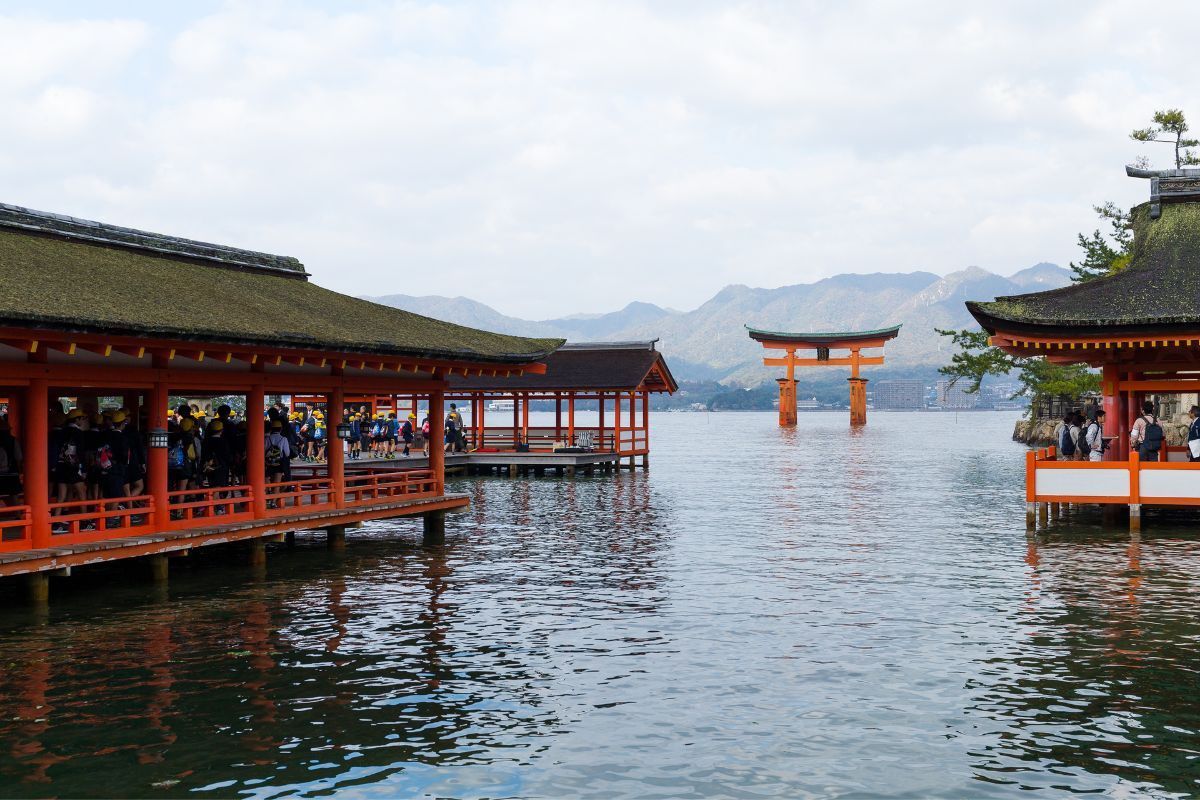
It is said to have been built by Saeki Kuramoto in the first year of Emperor Suiko (593), and was restored to its present form by Taira no Kiyomori in 1168.
The mysterious shrine pavilion, which combines the majestic beauty of its architecture with the natural beauty of the Seto Inland Sea stretching out before it and Mount Yayama towering in the background, attracts eager visitors from all over the world.
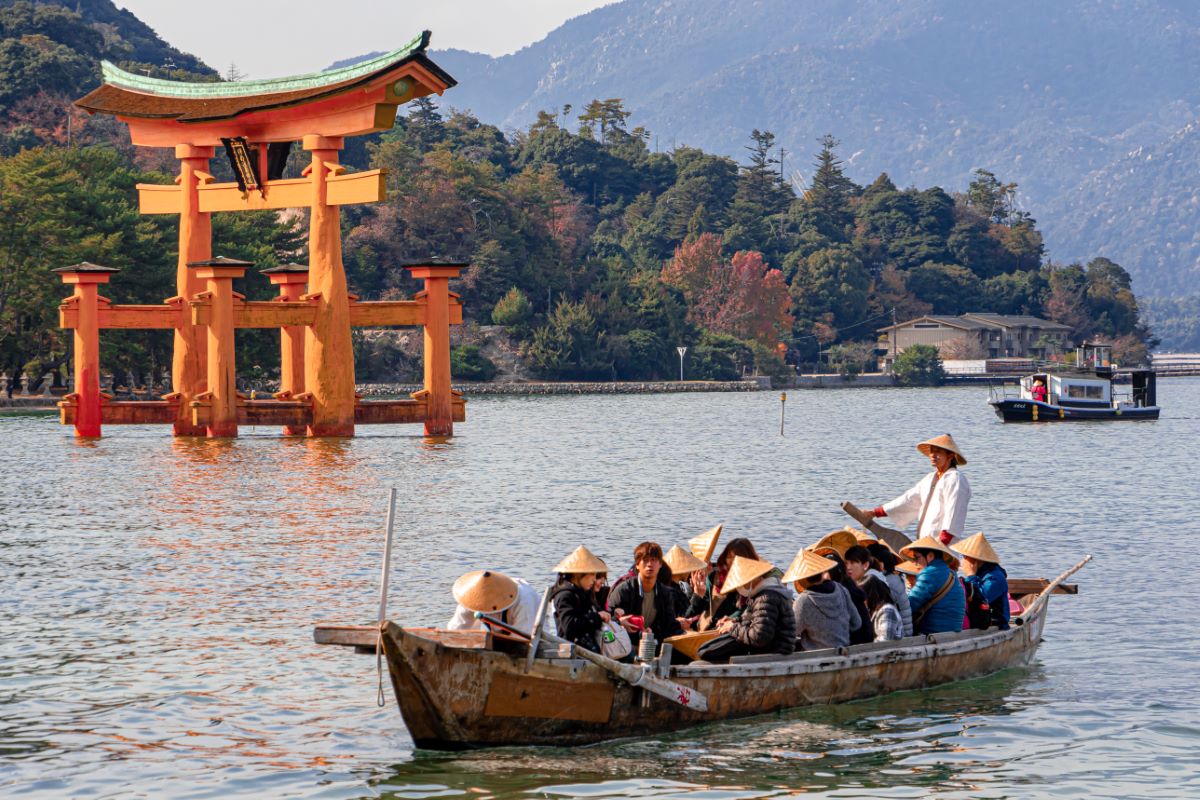
It was registered as a World Heritage site in 1996 in recognition of its unparalleled scenic beauty.
More Itsukushima Shrine Tourist Information
Itsukushima Shrine Spot Information
Address: 1-1 Miyajima-cho, Hatsukaichi City, Hiroshima Access: 15-minute walk from Miyajima Pier Hours: 6:30 – 18:00 (closed, depending on season)
You can learn about various aspects of the world of the Seto Inland Sea
Miyajima Ropeway
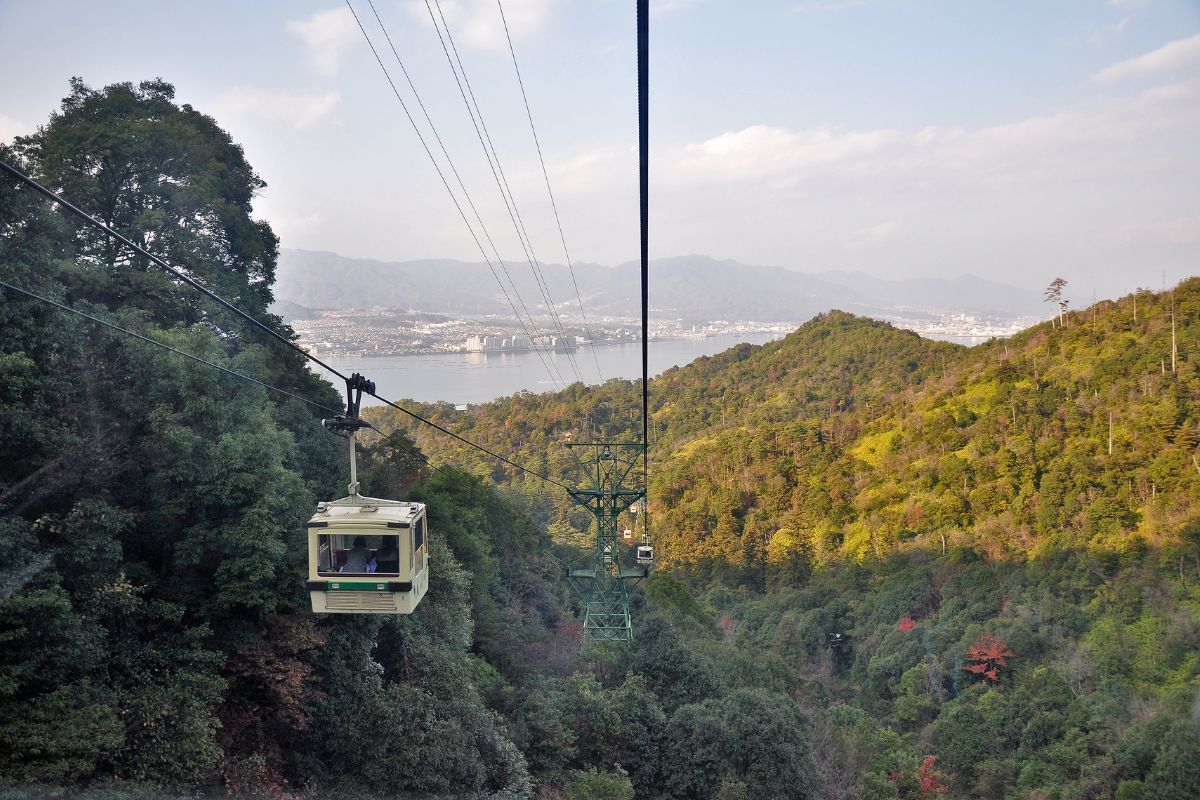
The ropeway connects Momijidani Station at the foot of Mt. From the observation platform near the top of the mountain, the view of Miyajima, a World Heritage Site, and one of the “Three Views of Japan,” is truly spectacular at sunset.
The ropeway also offers a variety of attractions, such as a hands-on experience of baking Momiji-manju (steamed buns) by hand and the “fire of oath,” a sacred place for lovers.
Address: Momijiya, Miyajima-cho, Hatsukaichi City, Hiroshima Prefecture Access: Short walk from Miyajima Pier Hours: 9:00 – 17:00 (varies according to season)
Mitaki-ji Temple
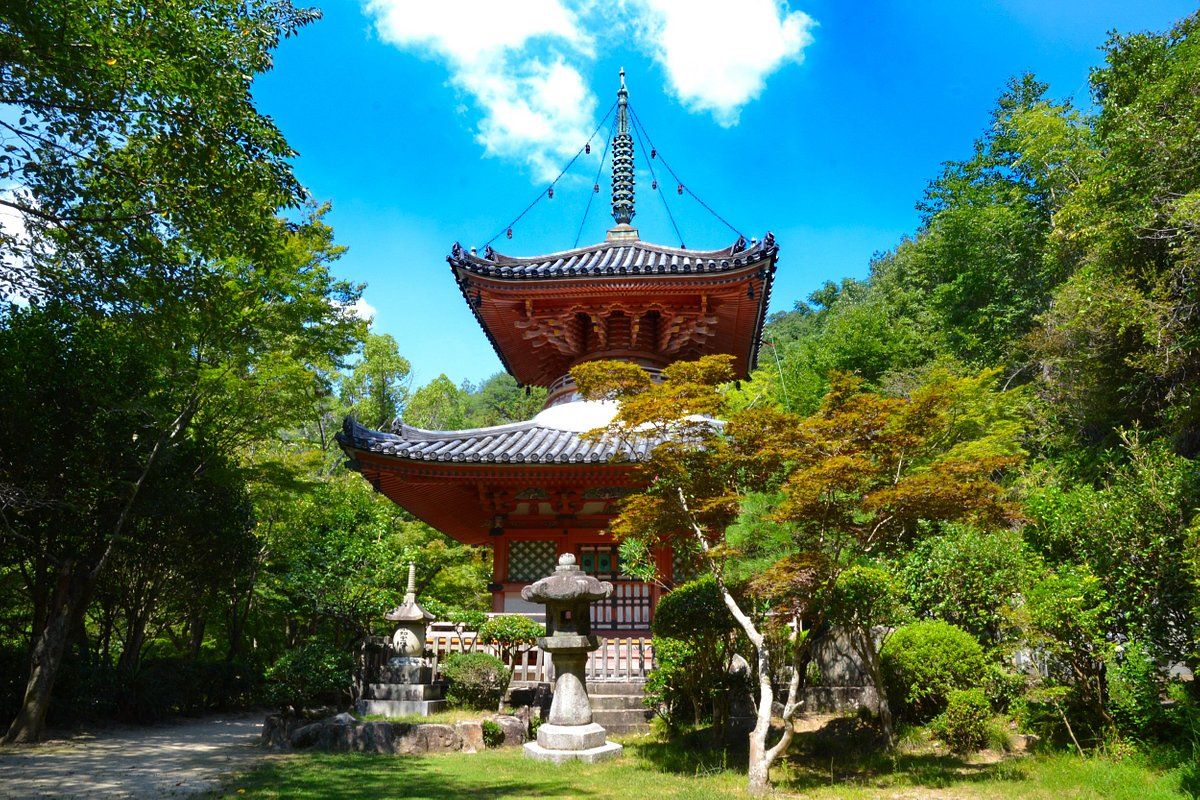
Mitaki-ji Temple is located in the valley of Mitaki Mountain in Hiroshima City. It is known to Hiroshima citizens as “Mitaki-kannon,” or Mitaki Goddess of Mercy.
Within the precincts of the temple is a vermilion-colored multi-purpose pagoda, which is designated as an important cultural property by Hiroshima Prefecture.
The wooden seated statue of Amida Nyorai inside the pagoda is also designated as a National Important Cultural Property.

In addition to these historically valuable items, the scenery is also a sight to behold, and the autumn leaves are very beautiful in fall.
Address: 411 Mitaki-yama, Nishi-ku, Hiroshima City, Hiroshima Prefecture
Access: 15 minutes on foot from Mitaki Station
Hours: 8:00-17:00 (8:00-17:30 from December to February)
Hiroshima City Botanical Garden

This botanical park is located in the middle of Miyajima and Hiroshima, on a hill overlooking a national park on the Seto Inland Sea.
The park has a collection of about 10,000 varieties of plants from around the world, and in the large greenhouse, one of the largest in western Japan, visitors can admire colorful flowers in a tropical atmosphere.

The park also offers nature experience programs such as orienteering and plant crafts.
Address: 3-495 Kurashige, Saeki-ku, Hiroshima City, Hiroshima Prefecture
Hours: 9:00-16:30 (last admission 16:00)
Admission fee: Adults: 510 yen, 65 years old and over: 170 yen, High school students: 170 yen, Younger children: Free
Hiroshima Toshogu Shrine

Hiroshima Toshogu Shrine, a shrine famous for praying for easy childbirth, with Prince Tokugawa as its deity
Hiroshima Toshogu Shrine is located about an 8-minute walk from JR Hiroshima Station and is dedicated to the deity Tosateru Daigongen (Prince Tokugawa).
Futabayama, where Hiroshima Toshogu Shrine is located, is in the direction of the devil’s gate of Hiroshima Castle and was built to pray for peace in the castle town.
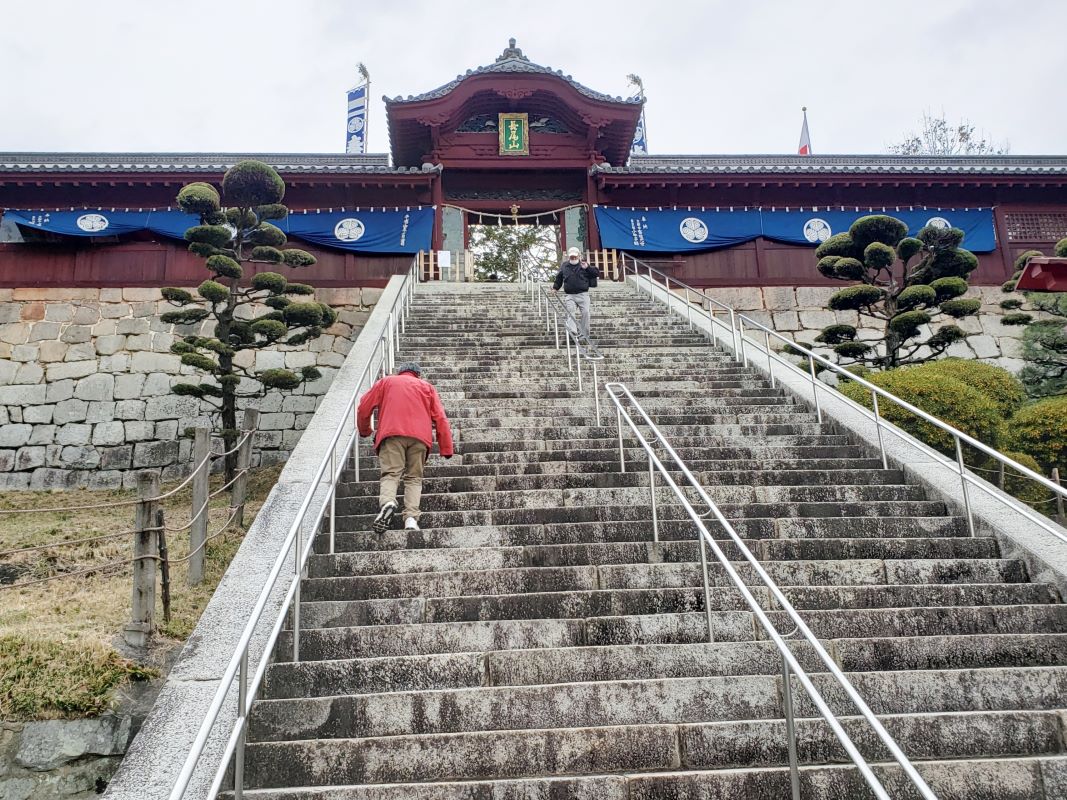
The shrine is famous for its prayers for easy childbirth, and it is believed that visiting the shrine on the day of the dog around the fifth month of pregnancy will bring good luck. The shrine is also famous for its red seal with the hollyhock crest in the center.
The stairs leading through the torii gate to the shrine grounds are quite steep, so make sure to watch your step. Don’t forget to buy a good luck charm as a souvenir.
2-1-18 Futaba-no-sato, Higashi-ku, Hiroshima-shi, Hiroshima 732-0057
Opening Hours: 6:10 a.m. to 7:00 p.m.
Access: 8 min. walk from Hiroshima Station. Take the Shinkansen Exit.
Website: https://www.hiroshima-toshogu.or.jp/
Ninoshima Island

There are many small islands in Hiroshima, including Itsukushima Shrine, but Ninoshima Island, the largest island in Hiroshima City, is especially recommended. It is known as an island where you can enjoy fishing, ebb and flow fishing, and other activities all year round.
The fish that can be caught change with the seasons, and the fruits of the harvest, such as apples and mandarin oranges, also change depending on the season, so you can enjoy your visit any time of the year.
Fishing for flounder is also available, so many visitors come for that. The island is only a 20-30 minute ferry ride from Hiroshima Port, so many families visit to enjoy the many activities on the island.

As a precaution, make sure to check the return ferry time in advance. There are only a few ferries, so you may have to wait a long time, or worse, the ferry may run out on the day of your return. Please make sure to check the time when you go to the island.
Name: Ninoshima Island
Address: Ninoshima, Minami-ku, Hiroshima City, Hiroshima Prefecture
Website (Japanese):http://www.ninoshimakisen.jp/
Setouchi Shimanami Kaido

The Setouchi-Shimanami Kaido is dotted with sightseeing spots where you can enjoy the spectacular scenery.
The road connecting Onomichi in Hiroshima Prefecture and Imabari in Ehime Prefecture is called the Shimanami Kaido and is dotted with scenic spots along the way, including the Kameroyama Observatory and Hakata Island, where you can enjoy spectacular views of the Seto Inland Sea and touch dolphins.
It is also known as a mecca for cyclists, having hosted Japan’s first international cycling competition in 2014 and been selected by CNN as one of the “Seven Greatest Cycling Routes in the World”.
For rest and sightseeing along the way, we recommend visiting Setoda Sunset Beach, which boasts some of the clearest water in Japan, the Kosanji Museum, known as the Nikko of the West, and Miraishin no Oka, a marble garden on the grounds.
Sandankyo Gorge

This grand gorge stretches approximately 13 km in length, cutting deeply into the primeval forests of the Chugoku Mountains. Kurobuchi, Sarutobi, Nidandataki, Sandataki, and Mitsutaki Falls are called the “Five Great Views” and are known as must-see sights.
Address: Shibaki, Akita-cho, Yamagata-gun, Hiroshima
Access: 13 min. from JR Hiroshima Station by Hiroshima Kotsu bus bound for Hiroshima Bus Center, 1 hr. 15 min. from Hiroshima Bus Center by Hiroden bus bound for Sandankyo via Kosoku, a short walk from the last stop

